I’ve been riding boards for three decades now. On flat water, wave, wake, snow, tarmac and even in the air – albeit not always on purpose to be honest. The three-dimensional nature of kitesurfing makes it the supreme discipline of boardsports for good reason. I’ve also been riding motorcycles for 25 years. Due to the nature of these sports I’ve also had numerous accidents and injuries, but those have never kept me away from it for long.
However, last year it was time to start something new. After returning home from a snowboarding holiday I ended up searching for a way to preserve that feeling and somehow manage to transfer it to my everyday life.

After some market research I decided to buy one of Evolve’s all-terrain Carbon GT boards. Its design, its specs and its service and warranty aspect seemed appealing to me. And to be honest, like so many others I also fell for their clever marketing. I rode the Carbon GT for six weeks and actually was very happy with it. Then all of a sudden a wheel-lockup shot me off at top speed and I had to find out that I wasn’t the only one this has happened to. But that’s a totally different story.
After several months of searching the web for a more reliable brand I finally pulled the trigger on a Lacroix Jaws. Mainly because I totally lost trust in Evolve and because I thought this would come close to the Carbon GT. Today I know how wrong I’ve been, thinking that they would even roughly play in the same league. The road to hell isn’t solely paved with good intentions, sometimes marketing lies are also part of the construction.
However, now that I’ve been riding the Jaws for seven months I finally feel qualified enough to write an in-depth review.
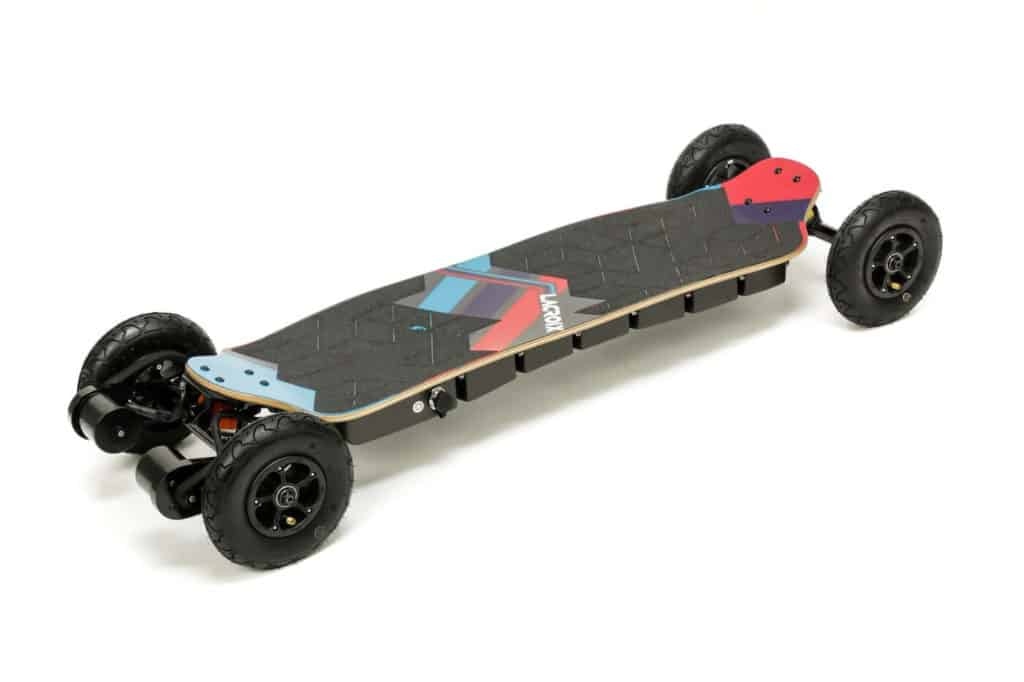
Check out the Jaws at: lacroixboards.com/jaws
THE COMPANY – LACROIX

I’ve been watching the eSkate market for one and a half years now, while also keeping an eye on Lacroix and their products. They are a Montreal based boutique eSkate builder. And even though they are relatively new to this market, they already have a great track record in building high quality, high performance eSkates. Their customers seem to be very happy with their products. According to countless Lacroix rider’s feedback, even their very first models show high quality and longevity. Over this period of time my internet research has also shown that Lacroix have an excellent reputation, even in discussion forums crowded with seasoned and sceptical community members who typically pull a company to pieces for each and every not well addressed issue or somewhat shady business practice.

Alex Archambault, the Founder and CEO of Lacroix formerly worked as a patent lawyer and DIYed eSkates in his spare time. After he decided to build eSkates not only for his own needs but instead to build some more and sell them, his business took off quite fast. He seems to be a decent fellow with a down-to-earth attitude and a refreshingly legit approach to running a business in a highly competitive market. And he definitely shows a tendency to stylish – or at times even bold – understatement.
Which comes in handy as transition to his new ‘entry level’ model.
THE JAWS
Basically, the Jaws is the successor of their still extremely popular Prototipo model, which is no longer on sale in the meantime. And it actually shares most of its components, which isn’t a bad thing though. However, they innovated the deck, the batteries and the enclosure which now is their own flexy carbon fiber one.
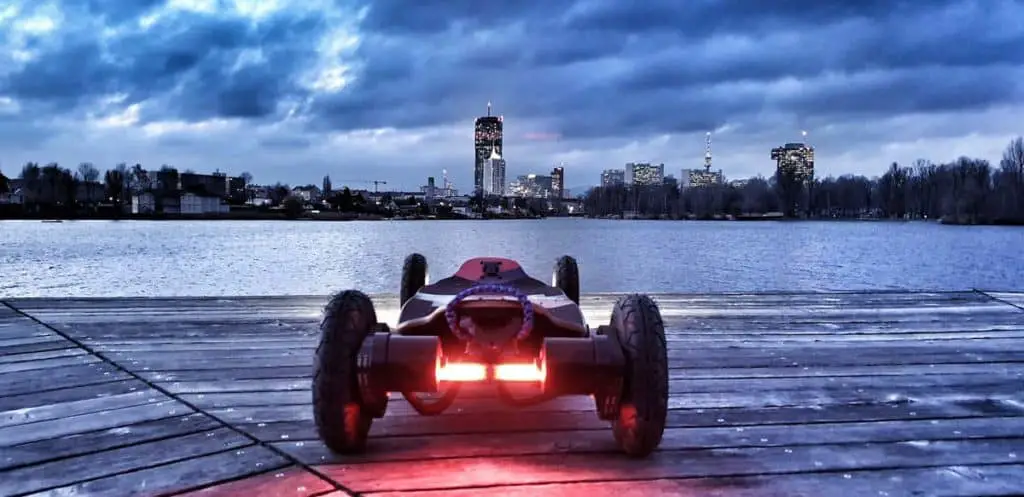
Specs
| Motors | Dual 6374 – 190kv |
| Range | 16 – 22 miles |
| Max Speed | Unrated (Reddit user claimed to reach 47 mph) |
| Weight | 29 lbs (13 kg) |
| Battery | 726wh – 12s4p |
| Charge Time | 2.5 hours |
The two other arrows in their quiver, the Nazare and the Nazare Lonestar are basically identical and also quite similar to the Jaws. They distinguish from the Jaws only by the following features: They have the new and even wider Lacroix signature ‘Hypertrucks’, they come with extra front lights and they have even bigger motors, batteries and more range. The latter by the way is the only difference between the Nazare and the Lonestar.
LACROIX JAWS VS. NAZARÉ VS. NAZARÉ LONESTAR
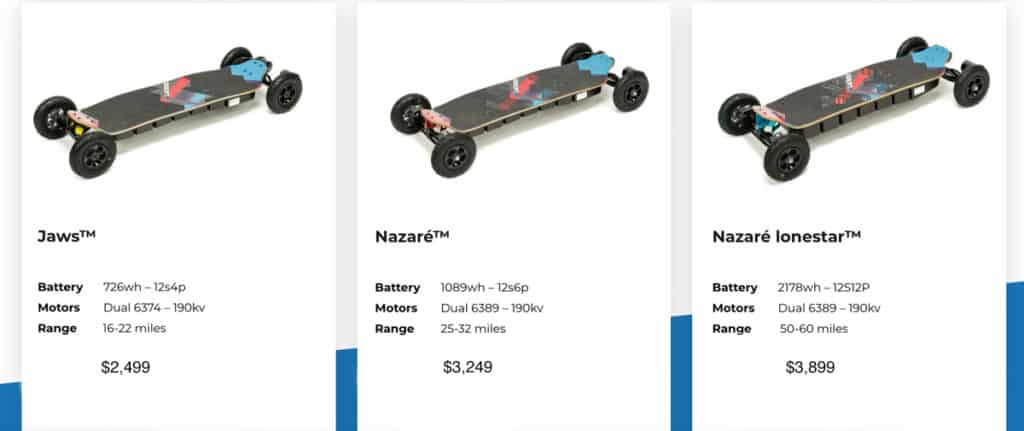
Jaws Nazaré Nazaré Lonestar
Jaws Nazaré Nazaré Lonestar
Jaws Nazaré Nazaré Lonestar
ON A SIDE NOTE
Because I also own an all-terrain Evolve Carbon GT, this review partly covers a comparison between it and the Jaws, at least wherever this isn’t utterly pointless.

From my own perspective, Evolve mass-produces heavily overpriced eSkates which – albeit being visually appealing – could kill people due to massive design flaws and/or poor build quality. The internet is full of reports regarding Evolve issues, and Evolve’s standard claim regarding such incidents is ‘It must have been user error’. At best, they fumble around with your faulty board while you’re waiting for weeks. Then they claim to have changed something without stating what exactly they did and eventually leave you alone with a product you totally lost your trust in.
Even if you are lucky and you haven’t got one of their countless lemons, in practice they sooner or later turn out to be all show and no substance. Evolve would so much like to be perceived as being a premium brand that they lately even dared a kind of shady comparison between their recent 2000 $ Bamboo GTR and a 650 $ Exway Flex prerelease version which they managed to get their hands on in a similar questionable manner.
So I’ll do them the favour and – as an extension to this review – compare one of their boards to a real premium brand, judged on merits like performance and quality and not on price tags only. My insights regarding this might be of additional help for some of you. For all others please excuse the occasional sideways glance at Evolve’s product.
THE STEALTH EFFECT

Well … stealthiness is typically not the strength of a high performance board like this. However, that’s not what I bought it for. The Jaws roars in a subtle way and it actually attracts a lot of attention. It’s an eye catcher and it’s clearly visible that this is anything else but an ordinary skateboard. I live in the EU, and eScooters are legal in my country. Having said that, eSkates and other PEVs are unfortunately still seen as toys and are not allowed to ride on roads or bike lanes, at least not yet.
Probably needless to say, this incredible machine is definitely not a toy.
Same as with the Evolve, which wasn’t stealthy either, I found my way through this. To avoid unwanted attention, I take extra care of my surroundings. I ride responsibly whenever other people are around and I only open the throttle when there’s a long stretch of tarmac laying ahead of me where I don’t endanger anyone – including myself. So far, I haven’t run into any problems with the police. In my experience, as long as you don’t behave like a moron they don’t have you on their radar. At least not where I live.
Of course, stealthiness is not limited to appearance. It’s also a question of noise, which nicely leads over to the next topic.
THE SOUND EFFECTS
I often read that people prefer hub drives over belt drives because of their alleged noise. Maybe that’s because there are a lot of brands offering belt drives in the meantime, and some of them might actually be really loud. Sometimes it’s solely the effect of too much belt tension, sometimes it’s caused by the whole drivetrain setup. The belt driven Carbon GT – albeit having smaller and less powerful motors – effectively produces more noise than the Jaws. To me, that wasn’t a big issue anyhow. But of course it could be one if you don’t want to attract attention.
At typical commute speeds, the Jaws is so unobtrusively silent that I actually had to attach a bicycle bell to the shoulder strap of my backpack to warn people of me approaching from behind.

When carving hard, the humming noise of the tyre tread hitting the ground is actually louder than the drivetrain.
LACROIX JAWS’ MOTOR SOUND
The motors of the Jaws only become really audible when I open the throttle wider than usually necessary. Then they generate a sonorously low-pitched sound one can really get addicted to. In comparison, the slightly bigger motors of the Nazare and the Nazare Lonestar produce a powerfully high-pitched, almost screaming F1-like sound which would irritate me a little, albeit these sound quite impressive too.
I recorded one of my autumn rides with a GoPro Hero Session Camera mounted backwards, directly attached to the boards rear tab.
If you want to get an impression of the motor sound, follow the inserted link to this video on youtube. Please bear in mind that the microphone was mounted extremely close to the motors, therefore this recording is much louder than in real world. In addition, some of the deck’s vibrations are also recorded due to the camera’s close contact with it.
I never thought I’d ever prefer the sound of an electric motor to the one of a powerful motorbike. But the sound of an accelerating Jaws really gives me the shivers. I’m loving it!
DECK & TRUCKS – THE MAIN SETUP
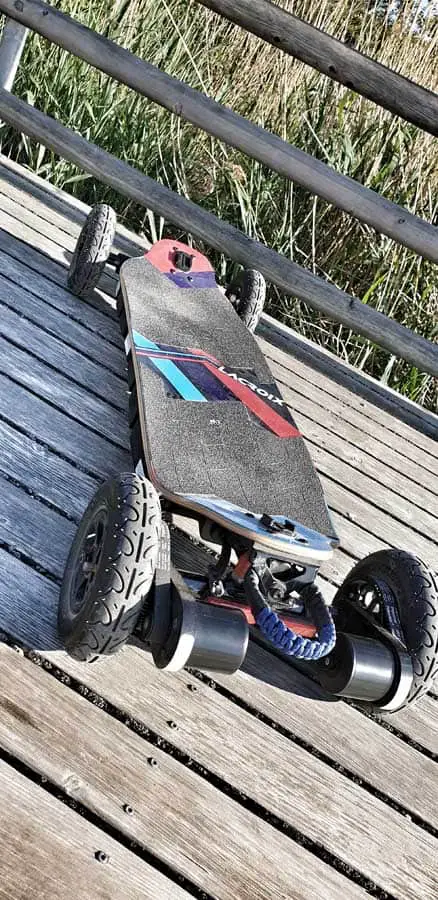
The main reason why I joined the eSkate community was because I was looking for something that could bring parts of the snowboarding fun to my day to day routine. The Evolve Carbon GT in its all-terrain setup already handled this quite well and I really loved it – until it showed its inherent issues at the most inconvenient point in time and sent me flying while riding on road.
According to the Lacroix website, their boards have been built as a complement to snowboarding, hence for all seasons other than winter. I tend to ignore that and even ride it in winter, although it can get freaking cold here. Riding the Jaws actually resembles snowboarding a lot, apart from the fact that you can carve and accelerate it uphill too. Of course, you can’t drift it like a snowboard or a Leiftech Summerboard. But to me, that’s more of an advantage on tarmac since it makes the Jaws more predictable than a Summerboard – especially when riding in traffic. And for obvious reasons even more predictable than the Evolve GT series boards.

The colors and the visual design of the Jaws personally remind me of 1980s aesthetics which may not be everyone’s cup of tea. Whatever one may think about it, it actually is kind of iconic. Its overall appearance resembles the widely cited ‘Hoverboard’ of Robert Zemeckis’ popular movie “Back to the future 2”. And so it doesn’t come as a surprise that some people are calling me ‘McFly’ when riding this board. And each and every time this happens, it puts a grin on my face.
The deck of the Jaws (measured without trucks and wheels) is 98 cm / 38 inches long and 28 cm / 11 inches wide. For an eSkate, I’d label that as ‘ultra-wide’ and it comes in handy for a tall guy like me. Between the angled front and rear tabs, the length of the resting foot platform on the deck is 80 cm / 31.5 inches. Considering the immense acceleration and braking power of the Jaws this is both welcome and necessary, as you can cope with the resulting forces better at such a long stance.

The long and wide deck makes for all kinds of stances, and unlike snowboarding you could even dance on it. The whole setup is built for speed while keeping stability at it. I haven’t got any speed wobbles so far.
Having said that, this stability at higher speeds has some drawbacks regarding maneuvrability at lower speeds. I know that the eSkate community is divided when it comes to double kingpin trucks (DKP). In my opinion, this is probably the only thing where the Evolve boards really shine. This, and their good look. I personally think that Evolve’s DKP Trucks are kind of a benchmark for other brands in the low/medium speed range. Their maneuvrability in this range is yet unmatched, although it’s already been copied by for instance the Ownboard AT series or the Backfire Ranger X series.
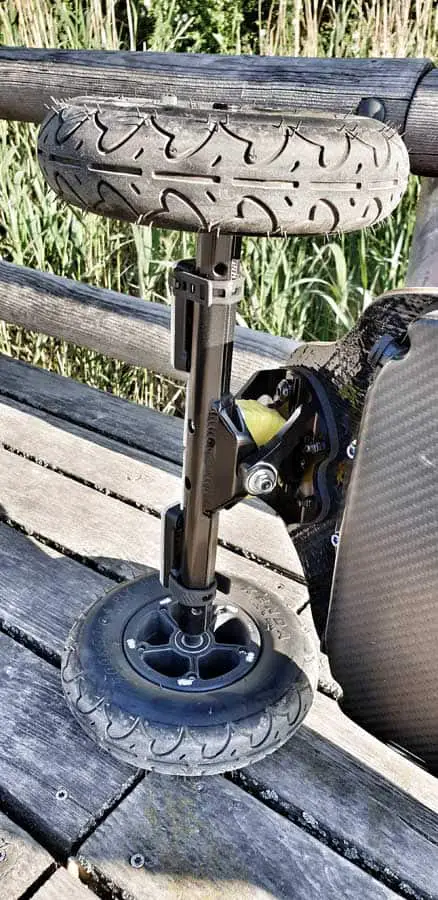
Admittedly, none of the Evolves come anywhere near the top speed of the Jaws. For typical Evolve speeds the DKP Trucks might actually be a very good choice. However, at higher speeds they’d probably wobble you out immediately. There’s a reason why downhill skateboarders don’t bet on DKP trucks.
Therefore, the all-terrain MBS Matrix 2 Pro trucks of the Jaws have to offer more stability at high speeds, at the expense of a larger turning circle at low speeds.
ENCLOSURE, FLEX & GROUND CLEARANCE

Although the flexy battery enclosure has to carry a considerable amount of cells, Lacroix managed to prevent it from touching the ground by clever and sleek design. In conjunction with the deck shape and the big pneumatics, ground clearance isn’t a problem.
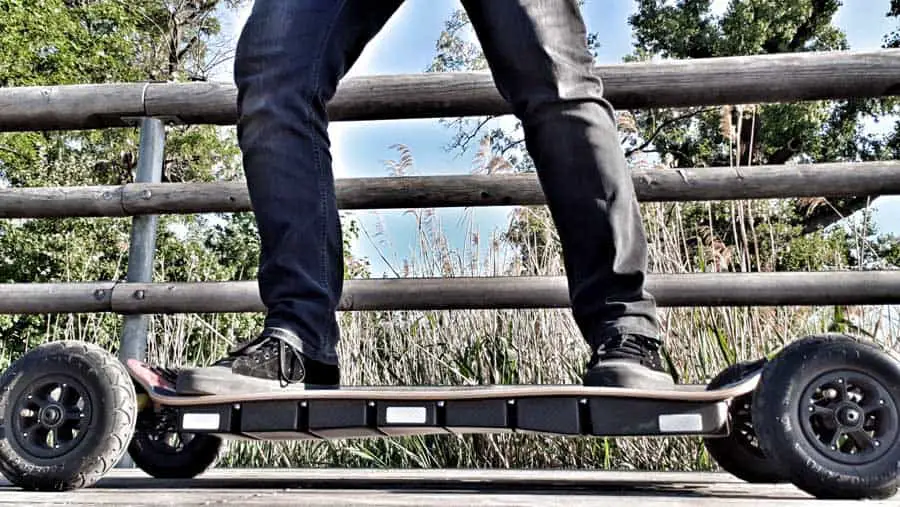
I weigh around 100 kg / 220 lbs including gear. And although I occasionally ride over sticks and stones and I frequently ride across curbs on my daily commute, my enclosure almost looks like new. By the way, Lacroix offer a regular flex deck for up to 113 kg / 250 lbs of riders weight and a stiffer one for even heavier riders up to 159 kg / 350 lbs. Currently there are not many other eSkates available on the market that are capable of moving such loads. On Alex’ recommendation I chose the standard flex, which works perfectly for me.
Also worth mentioning, according to its specs the Evolve Carbon GT’s weight limit is 100 kg / 220 lbs. And with regards to the apparently poor resilience of their components this should be interpreted as a hard limit. Everything above might put too much stress on their hardware and thus even increase their failure rate.
Although the Jaws is solid and quite heavy, it offers a very comfortable ride. Lacroix somehow managed to find the sweet spot of flex and stability. The board rides quite unaffected, even under adverse conditions.
By the way, the three bright spots on each side of the enclosure are reflective stickers I added for safety reasons as they make for better visibility in the dark.
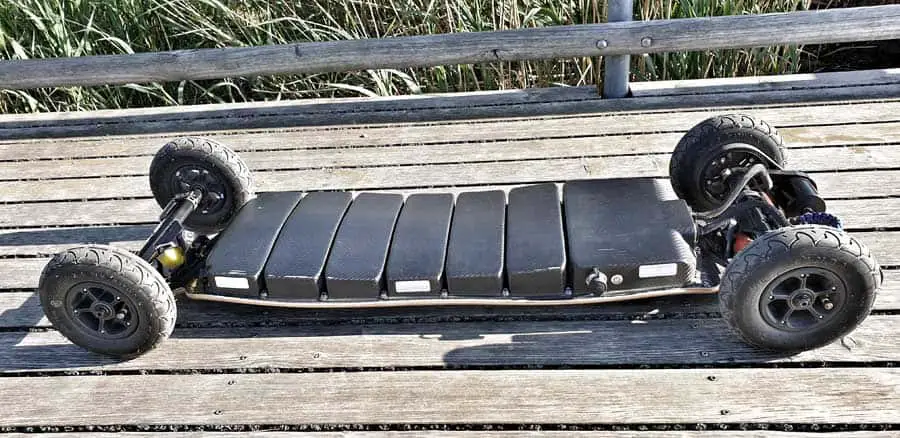
The only scratches my enclosure actually got came from an unintentional ride down a few steps. But more of that later.
THE RIDE
Bumps, rocks, gravel, cobblestones, cracks, potholes, sticks or grass … whatever you have to avoid on a stiff deck with urethane wheels, on the Jaws you might not even recognise that you just ran over it.
The combination of 200 mm / 8 inch pneumatic wheels and a flexy deck makes for an extremely comfortable ride. In combination with that powerful drivetrain, the Jaws feels like a magic carpet with rocket boost. It actually resembles a snowboard ride through knee-deep powder.
During last fall I once was a little distracted and overlooked stairs going down right in front of me while riding at approximately 25 kmh / 15 mph. These stairs had five steps and I actually managed to ride that down without tumbling off. On the Carbon GT this would have turned out badly.
When riding the Carbon GT on my daily commute to the office, I was feeling a lot of vibrations and some of the cracks were going up my spine quite unpleasantly. Upon arrival, my feet were usually feeling pretty numb. That already happened after about 10 km / 6 miles. Now after the same commute on my Jaws, I get off relaxed.
I once rode the Jaws 40 km / 25 miles in one go and was quite amazed that this ride hasn’t left any fatigue either.
THE REMOTE AND THE ESC

Since all eSkates rely on radio connections for transmitting control input from the remote to the board electronics, these are the most crucial components when it comes to reliability and safety. Radio connections inherently prone to interference and it takes sophisticated technology and supportive measures to keep the effects of these interferences at a bare minimum.
An eSkate remote in conjunction with the ESC controls both acceleration and breaking of the board, which both can cause severe accidents in case of any malfunction, no matter if caused by lost connections, hardware/software failures, design flaws, drifting trigger values or interfered radio signals.
Now imagine a remote control / ESC conjunction that either accidentally applies full brakes, unintentionally accelerates the board or puts the brakes out of function because of lost radio connection between remote and ESC. And now imagine a similar behaviour in a car or on a motorcycle. I am quite sure we’d still be riding horses if such would still be an issue there.
Evolve for instance have been digging their heels in insisting on a faulty proprietary remote for fifteen years, although almost every rider reportedly had issues with pairing and connection quality in general. And a lot of people have gotten severely injured by wheel lock-ups on an Evolve over that period of time. It also happened to me, nota bene on one of the latest Carbon GTs right before the GTR came out. And in the meantime exactly the same problem has already been reported for the GTR series, albeit less often than with all previous series.
Lacroix chose a different path, presumably for good reasons. They decided to use a standard boosted-style Flipsky VX1 remote which has been widely used and known in the DIY community and has been proven to be reliable for a long time already. Admittedly, this remote isn’t the best looking one, but it’s solid and does the most important job of a remote properly: It works without issues.

The remote features three speed modes (more on that later) and has LEDs for both board charge level and remote charge level. Acceleration and brakes are controlled via thumbwheel. In fact, there’s not much more to say about it.
By the way – for people who fancy something more stylish, Lacroix now offer an optional Hoyt ‘Puck’ remote control too. According to their website, there´s an additional use case for it:
‘For those living in crowded areas or where radio-frequency interference is a thing, the Hoyt puck’s channel hopping technology will provide a more reliable connection even in the worst conditions.’
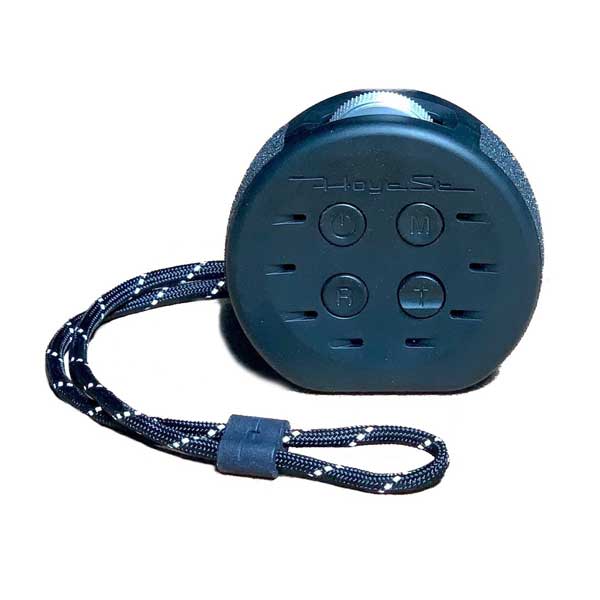
Lacroix currently ship their boards with Enertion’s extremely popular Focbox Unity electric speed controller (ESC). It has somewhat become the gold standard of high performance ESCs and currently is built into every premium eSkate on the market.
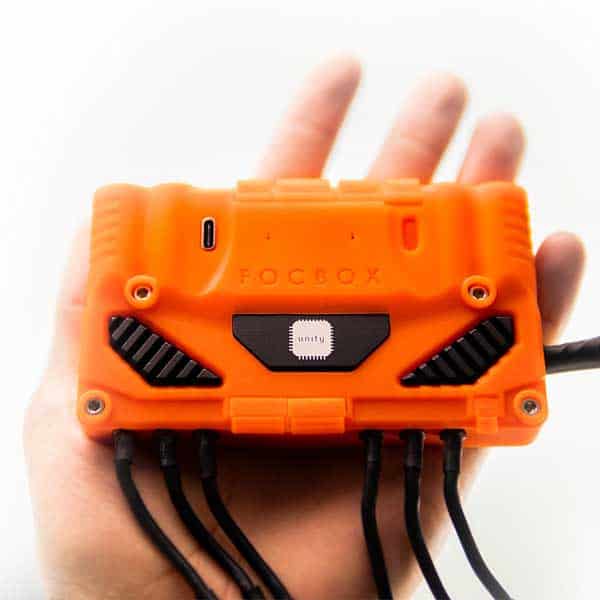
However, Enertion – a company that also built popular high performance eSkates – went bust recently. As far as I’ve read, mainly because of shady business practices of Enertions former CEO. Countless community members relied on Enertion’s promises in good faith and lost significant amounts of money, because their ordered and paid Enertion Raptor 2.x series boards never arrived.
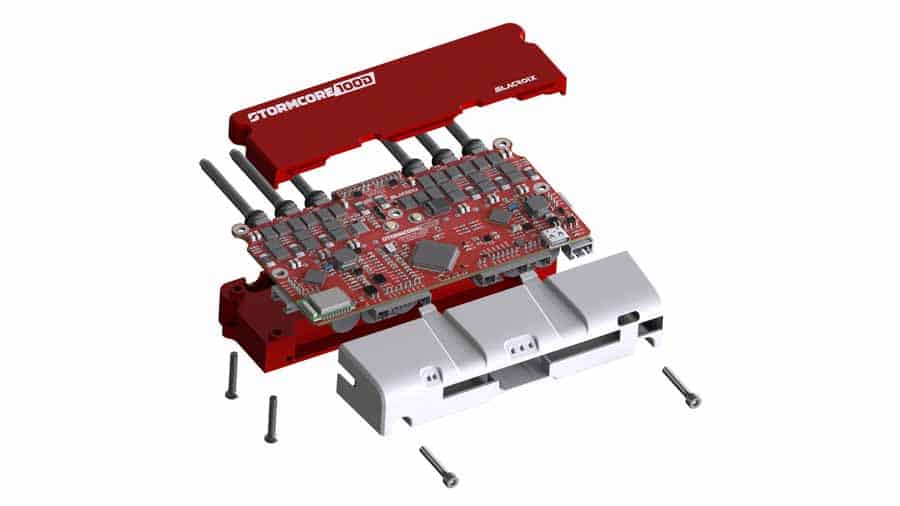
Lacroix luckily managed to hire Enertions former engineers and lately announced their completely new developed Lacroix ‘Stormcore’ ESC. Not only will this secure their future business. It is also a clever move as they are going to sell a key component of high performance eSkates to both other companies and to the DIY market.
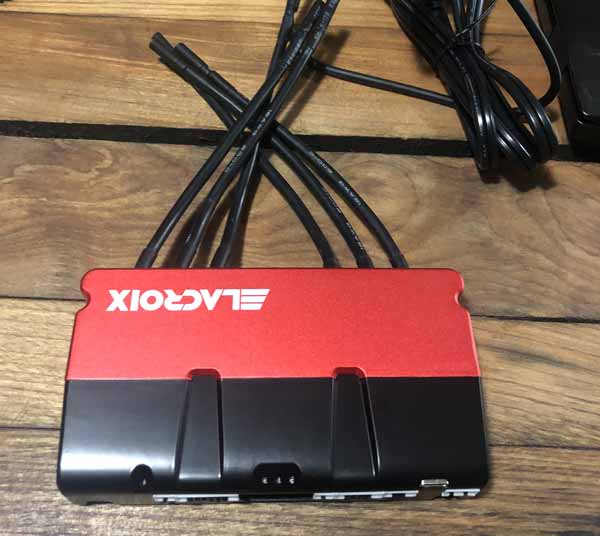
TOP SPEED
I am well aware of the fact that the top speed of Lacroix boards is a well-kept secret. And to be honest, I can’t tell you either. It’s not that I haven’t tried to find it out. Their claim is that the board will never be the limit, which hits the nail on the head. For these boards, the limit is the rider. And I am no exception to that rule. I once rode my motorcycle at speeds beyond 200 kph / 124 mph just to find out how fast it can actually go. Of course solely for scientific purposes. It actually was no fun.
I also tried to push the Jaws towards its limit, but failed as it got too fast for me very quickly.
To spoil it though: In the meantime there’s a post on reddits ‘ElectricSkateboarding’ sub lifting that secret about Lacroix. A fellow rider actually had the balls to test it out and he claimed to have reached a top speed of 75 kmh / 47 mph, albeit without video proof of it.
To me, that’s kind of splitting hairs. Such a speed and even more is no problem on a snowboard, as I measured last winter. On a wakeboard cable I occasionally rode at 42 kph / 26 mph. When falling at such speeds, water feels like concrete. You bounce off of its surface like a flat pepple a couple of times and finally come to a stop quite brutally.
However, riding a motorized plank of wood on unforgiving terrain at highway speed … well, browse the internet for some results. You might become a nominee for the annual Darwin awards if you successfully managed to eliminate yourself from the gene pool. Or at least you might earn a honourable mention for a failed attempt. Style counts as I’ve read, and at least that would be granted when trying this on a Lacroix.
ACCELERATION

This is where the Jaws points out too. The boost of it is so violent that it’ll teach you fear at your first rides. It actually took me some time to grow into it, especially when riding it in red mode. Comparing the Jaws with my Evolve Carbon GT is like a comparison between a supercar and a family van. Some don’t even get the former out of the dealers parking lot without burning rubber or even causing an accident. I finally quit riding the Evolve after its wheel lock-up, but I assume the Jaws would smoke it within a second or even less.
I’ve been riding the Jaws in red mode for the first two months. I have to admit, in the beginning it took me a considerable amount of focus not to get thrown off by the boards somewhat jerky load change response in red mode after releasing the thumbwheel, not to mention the braking power. It’s actually similar to driving a supercar. You have to get used to it.
Evolve’s customer service likes to bring their own board’s load change response into play when they try to fool their customers for allegedly not being able to distinguish their board’s little jerk from a sudden wheel-lockup. Compared to the Jaws, that’s somehow unintentionally amusing and even kind of cute. Even in the highest speed setting of an Evolve, its load change behaviour is almost not noticeable for an experienced rider, as its acceleration comes nowhere near the one of the Jaws.

The Jaws is a completely different kind of beast. Here, ‘red mode’ is somehow the equivalent of Tesla’s ‘ludicrous mode’. And that means insane acceleration and braking power, which definitely requires an alert and responsible rider. Its red mode is tremendous fun, but it’s not suitable for a day to day commute. At least in my opinion.
I also tried its orange mode for few days and found not much difference. I am not ashamed to admit that I actually ride it in green mode in the meantime, at least on my daily commute. Acceleration and braking power is still superior in green mode, but now it’s a somewhat tamed beast that takes less alertness and leaves me some attention to enjoy my surroundings.
By the way: Unlike Evolve and most other brands, the top speed of a Lacroix board seems to remain the same for all three modes. As mentioned, I was not able to reach its limits. Not even in green mode.
BRAKING POWER

Similar to its acceleration, the brakes depend on the chosen ride mode. So basically, the higher the mode, the stronger the braking effect. However, I am not 100% sure on that. The acceleration curve per mode seems to differ more noticeable than the braking curve does. To me, that even makes some sense. The Jaws is anything else than a beginner board. Therefore, a rider of the Jaws might choose between different acceleration curves and speeds. But when he requires the brakes, they should manage to stop the machine swiftly, no matter which mode has been selected.
Other brands may have chosen a different path, which in terms of performance especially applies to real entry level boards like the ones of Evolve. I often read that boards of other brands don’t brake anymore once they’ve come to a complete standstill. That’s not the case for the Jaws. Even at standstill on an incline or decline, the board brakes quite properly. That often comes in handy when waiting at a red traffic light. However, I haven’t tried that on a really steep hill yet.
RANGE
The Jaws comes with top-of-the-shelf Sanyo NCR20700B Li-ion cells in a highly efficient 12S4P configuration, featuring a capacity of 726 Wh. At normal temperatures those cells show no battery sag at all. At very low ambient temperatures, a little sag was noticeable. However, anything else would have surprised me a lot.
I did a range test at around 18 degrees Celsius, with light wind and some inclines and declines along the route. I weigh 100 kg / 220 lbs with gear. I chose ‘red mode’ and didn’t go easy on it. Under all these conditions I managed to ride 40 km / 25 miles in one go. Full acceleration and speed was available for 37 km / 23 miles. On the last 3 km / 2 miles the board limited its speed noticeably. I reached my home without having to drag or carry the board. I probably could have done another few km / miles, but I didn’t want to drain it completely. That’s not good for the batteries.
The Carbon GT only reached about a third of that range on exactly the same commute and ambient temperature, and its batteries sagged so badly that I was forced to carry the charger with me each and every ride. That most definitely was no fun, I actually got range anxiety on the Carbon GT.
Riding the Jaws in temperatures near freezing point shows the usual range reductions of battery powered electric vehicles at very low temperatures. I’d say I got about 35% less range out of it, compared to an early summer ride. With very low ambient temperatures and strong headwind even a bit less. But given the fact that these batteries are far more exposed to the forces of nature than the ones of an electric car, I was quite impressed how well they could handle my daily commute on a winter’s day.
CHARGING
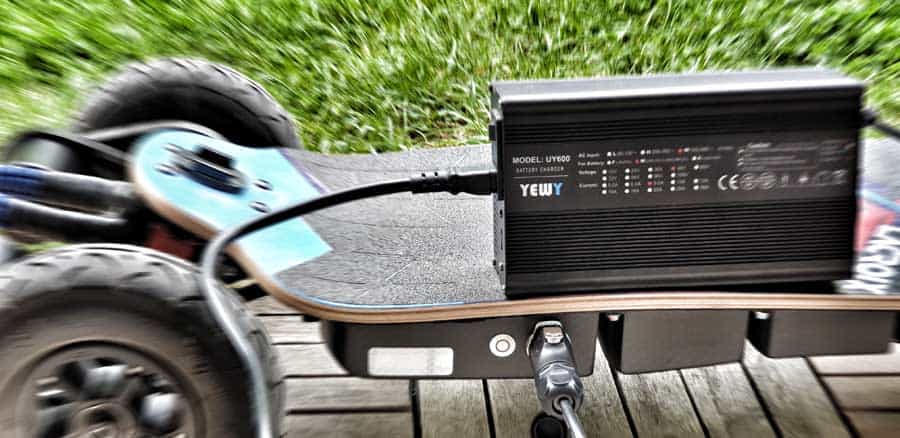
A board with such a battery capacity needs a professional charger. And that’s exactly what you get. The chargers length and width is similar to the one of my Carbon GT, but it’s at least three times higher than the latter. It’s a premium quality 8 Amp charger with a solid cable and a massive plug. And it has a built in cooling fan which sometimes gets automatically switched on to dissipate heat losses, especially during the first charging phase.
As confidence-inspiring as that may be, it can have its negative sides too. The operating noise of the fan is quite loud and definitely not to be ignored. So if you plan to charge your batteries underneath your office desk or next to children’s rooms while your little ones are going to sleep, simply drop it and better charge somewhere else.
However, this noise has its advantages too: You can literally hear when your batteries are almost fully charged. Fortunately, this board’s battery capacity and range is so good that I don’t need to charge it that often. That adds enough flexibility to deal with it.
According to their website, this board takes 2.5 hours of charging time from empty to full. I checked it out in practice and can almost exactly confirm that.
APPLICATIONS & VERSATILITY
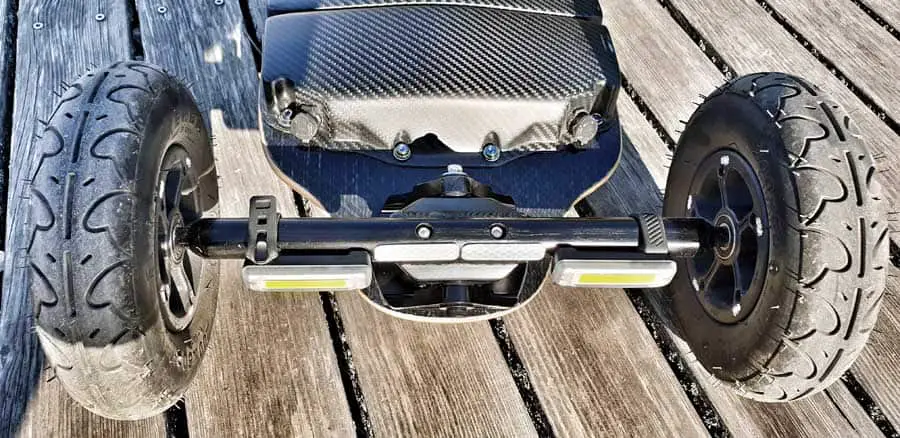
The Jaws has a wide range of applications. It plays off its strengths to the fullest on high speed rides on a closed-course, on long rides over wide and open terrain of all sorts, on hilly terrain with loads of inclines and on group rides. It is also a carving demon and fits your needs wherever you want to surf the roads at higher speeds.
It is also very good for daily commutes, as it has good range and can handle light rain or puddles too. If you have a thumb with fine motor skills, you can also ride it through crowded places very slowly if needed. Just be sure to carry a bicycle bell then. And if you are an acceleration junkie like me, the Jaws might be your first choice too.
Due to its limited maneuvrability at low speeds it might not be the best bet for riding through a historic old town with very narrow corners. It also might not be the best solution for commutes with a combination of rides and public transport due to its weight and kind of bulky nature. However, I did both and it’s manageable. Especially when you mount a paracord loop to the back truck like I did, you can drag the board like a trolley bag if necessary.
If you frequently ride at night time, this might be helpful too: The Jaws comes with built in plugs for the Lacroix ‘HyBeams’ front lights. Those feature 2200 lumens each and come with the Nazare and Nazare Lonestar. However, these lights are not included in the price of the Jaws. And they are for sure not allowed within the EU as they probably might blind pilots enqueued in their approach corridor. They can be ordered from their website though.
For my use cases, the 100 lumen ‘BBB / BLS-138 signal combo’ LED lights that you can spot on some of my pictures are absolutely sufficient. One pair costs 50 € and can be strapped to the trucks with rubber tabs. So far, they´ve been holding up extremely well and they look superb.
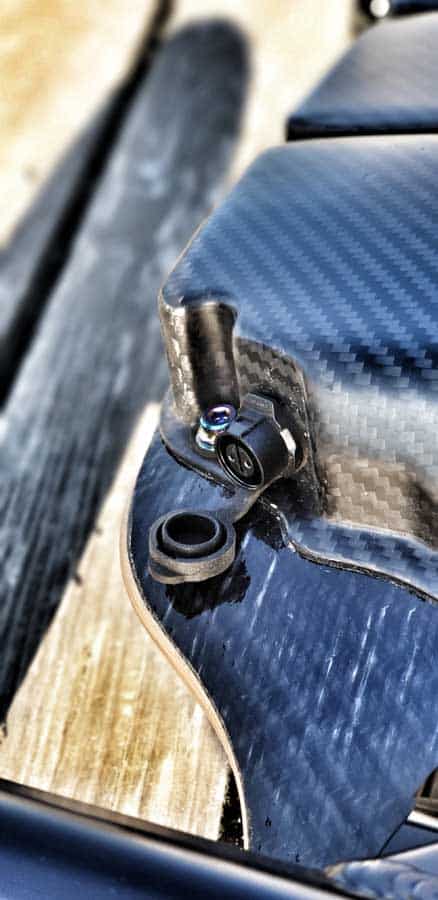
By the way, the Jaws, the Nazare and the Nazare Lonestar come with an already built in GPS tracking module for better theft protection. Given their price, that’s not a bad idea. Put a SIM in it and you’ve got a very very long leash.
PRICE TAGS
The Lacroix Jaws is an exceptionally well engineered, reliable, high quality machine, designed and built in Canada out of the best parts the eSkate market currently provides. And it’s worth every single cent. The Lacroix Jaws costs $2499 at Lacroix’s Website.
Check out the Jaws at their Website: lacroixboards.com/jaws
As of April 2020 Lacroix also sells their products from an european Warehouse based in Slovenia. Check out https://lacroixeurope.com/ for more information. When bought within the EU, the Jaws currently costs 2.799 € including taxes and duties.
The Evolve Carbon GT is a good looking but poorly engineered board, made of cheap components, thrown together hastily in a chinese factory and finally sold with an extremely high markup. If you’re lucky, it doesn’t throw you into oncoming traffic. And if you’re even more lucky, your brakes never fail while riding downhill because your Evolve remote lost its connection again. Then, as soon as it’s out of warranty, the first components fail. The quality of its components is so poor that many of them might even fail within the warranty period. Reportedly, the motors overheat quickly and eventually quit, the ESC PCBs shake loose or burn down and the batteries sag awfully and degrade quickly, just to name a few. And the Evolve remotes are a story in their own.
You might probably end up buying one spare part after the other, all with the same high markup, while your Evolve remains unridden. It’s a clever business model, because both sales and aftersales services are a cash cow for Evolve. And the customers keep paying.
The brand new all-terrain Evolve Carbon GT cost me 2.000 € last year. An absolutely comparable brand new Ownboard Carbon AT with belt drive costs around 1.000 €. A brand new Backfire Ranger X2 with hub drive and similar specs costs around 1.000 €. Now consider the mentioned 650 $ for an Exway Flex which probably offers a better overall quality-price ratio than the brand new Evolve Carbon GTR (guess what – 2.000 €) which is also 100% made in China, and you might guess Evolve’s markup.
I think, all of that speaks for itself.
Of course, all of the above mentioned qualities of the Lacroix Jaws come at a price. What really surprises me and stuns me is, that the price delta between these two completely different products only amounts to 799 €. At least within the EU. Given the offered quality of both, one would expect far higher price difference between the Jaws and the Carbon GT – or the GTR, which costs exactly the same as the GT did last year.
I imported the Jaws from Canada to the EU last year, as this was the only option to get one to my country at that time. Including shipment, taxes, CAD/EUR rate, tariffs and other duties, the Jaws cost me 3.034 €.
As the saying goes: “Those who buy cheap, buy twice.” Sadly, the Evolve Carbon GT was anything else but cheap to buy, but it is of cheap quality. And now it’s a giant paperweight because I can’t resell it with a clear conscience. Had I bought the Jaws first, it would have saved me 2.000 € (not counting the costs of the damaged gear) and two months of walking with a limp.
OTHER THINGS WORTH MENTIONING
At the moment, there are no user manuals available for the Jaws. At least not that I’d be aware of. However, for the remote I would have found that helpful. But since they use a standard Flipsky remote it was easy to get that on youtube. As I just discovered, they recently updated their website and linked to exactly the same remote tutorial on youtube. And they uploaded some videos with service instructions. That might be helpful once you need it.
So far, there hasn’t been any need to do that. This board keeps going and going and going. I like riding more than doing maintenance work, so this comes in handy.
Lacroix were always very quick to respond to any question I had and they were very helpful. And more importantly: They’ve always kept their promises, which is kind of rare within the eSkate business.
According to their website, they also provide remote diagnosis in case of any failure. Then they send you the part that needs to be replaced and support you in doing that via video call. The big advantage of that approach is that there’s no need to send the whole board back and forth, so you get it up and running more quickly.
CONCLUSION
After seven months and a couple of 100 km / miles of riding, I had nothing but fun with the Jaws. I also haven’t had any issues with it. And judging from what other people write about Lacroix, I am quite confident that they’ll treat me fair and support me properly even if there were any issues outside of warranty. The build quality, reliability, power and overall fun factor of this board is worth every single cent. I couldn’t be happier with my purchase.
Every time I step on this incredible machine and push the thumbwheel forward, it makes those little hairs stand up in the back of my head and puts a big smile on my face. Actually quite similar to stepping on my snowboard just before a steep and deep powder run on a sunny winter’s day.
In a nutshell – mission accomplished.

Check out the Jaws at: lacroixboards.com/jaws


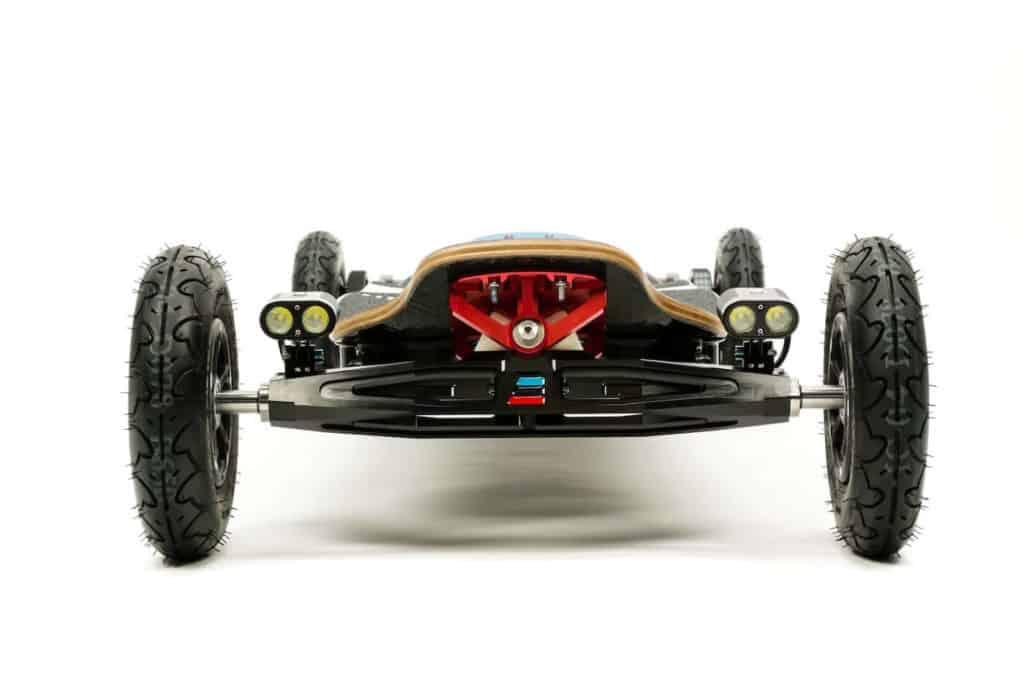

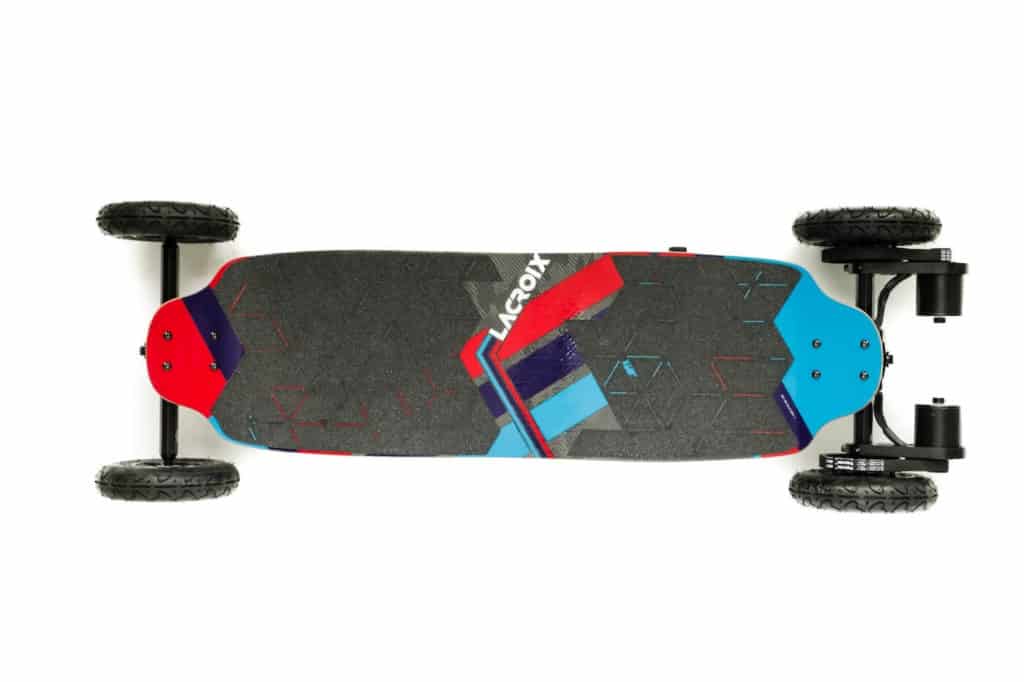

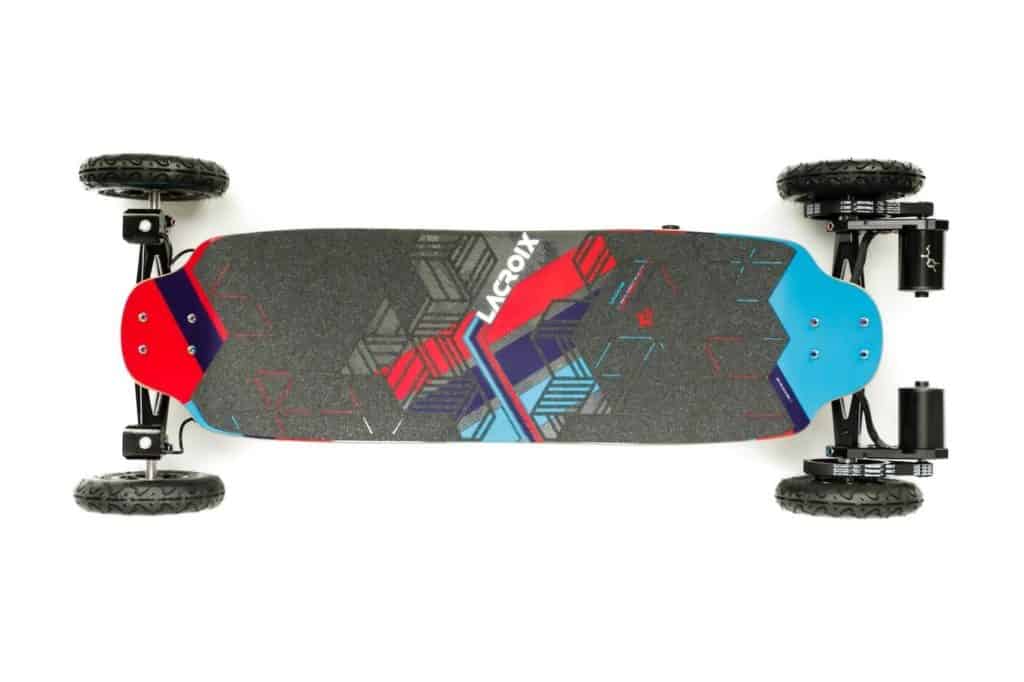

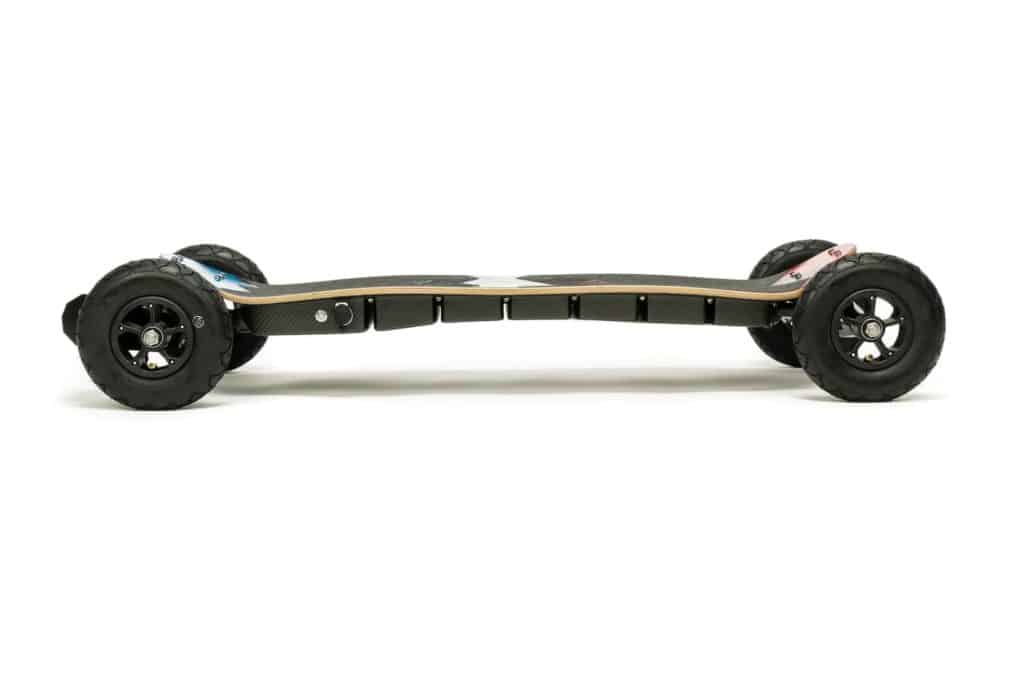
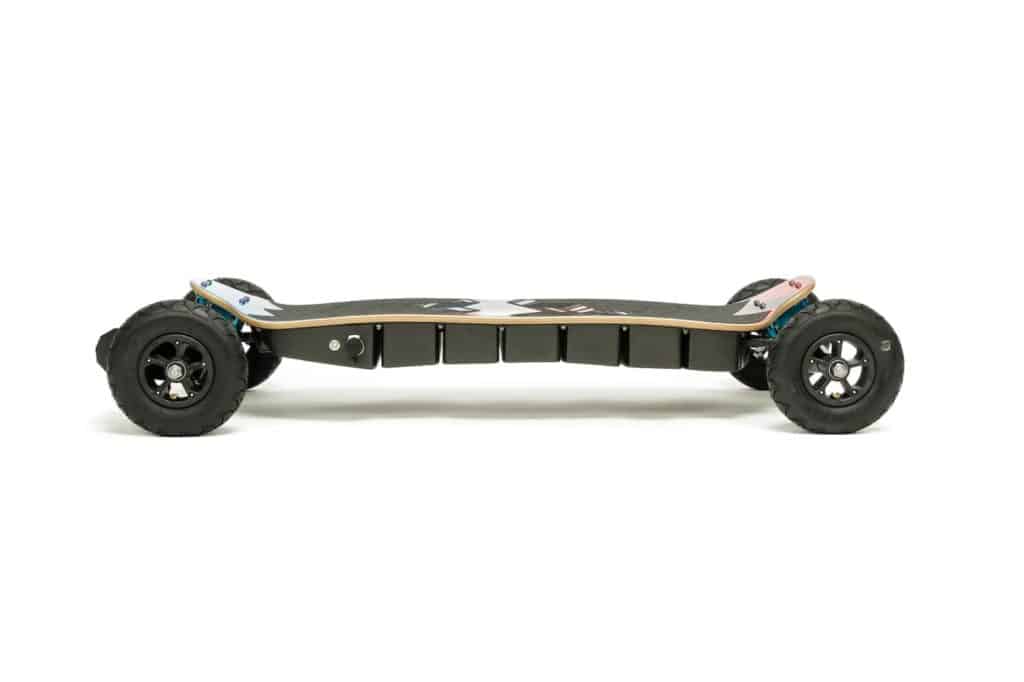
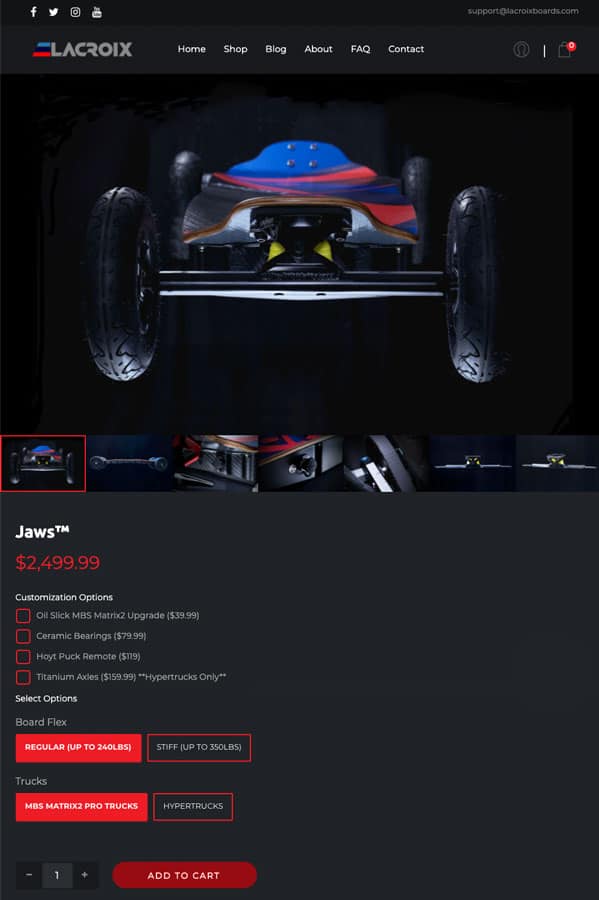
Great article as always. Do you have links to your paracord handle and backpack bell?
The paracord loop unfortunately can’t be bought, my wife made that one for me. However, it’s quite easy to make one. We bought some reflective paracord and a clasp on amazon and found lots of tieing tutorials on youtube that helped a lot. To avoid rattling of the clasp while riding, I finally put a shrinking tube over it. Works like a charm.
Regarding the bell – that’s an extremely cheap bicycle bell we got from a local shop. You’ll also find such on amazon.
Thanks mate!
So I found this article/review really interesting and helpful because I’m ready to up my board game and range
and Lacroix is definitely a front runner in my search.
But I have to say as a longtime Evolve customer I’m surprised with all the problems you’ve had. And maybe I’ve been lucky but the few issues I’ve had Evolve’s customer service has been great and fast and they’ve always honored their warranty. I’ve had both carbon and bamboo evolve boards since gen 2 and never had ‘wheel lockup’ thank goodness. So, I’m five years into Evolve with six (6) boards purchased and at least 12,000 miles ridden ( I ride almost 200 days a year) and have had relatively few issues, a bms chip and a battery issue covered under warranty. So i am a fan of Evolve.
And by the way, there is a huge difference between the GT and the GTR, the GTR has no sag and 25% better range. But like I said, I’m ready for a board with an a/t setup that has at least a 40 mile range. So Lacroix has my interest. And lastly let me say I did have a bad experience similar to your experience with Evolve, and it was with Future Motion aka Onewheel. They ‘brick’ (seize up) and the result is brutal.
They also site ‘user error’ to avoid warranty claims. So in the end I guess shit does happen and some of us get lucky with one company while get burned by another.
Thanks for reading.
I’m glad for you, you’ve obviously been lucky so far. Definitely didn’t go that well for me. Out of interest – why did you buy 6 Evolve boards in 5 years? That’s more than one board a year and a lot of money. And they didn’t change that much throughout the last years.
See my reply above.
Well the truth is each generation did substantially change from the previous.
Gen 2 had only one big motor and I had a carbon and bamboo of each of those.
Then came gen 3 with two smaller motors and I did the same thing with a carbon and bamboo there. By the way I did sell my first two to help fund the next generation. And then most recently was the GTR ( gen 4 ), which introduced their new power system with more range (20 miles-ish) and most importantly no sag, and that’s a huge improvement.
And yes, carbon and bamboo there as well. Why do I choose to afford this you’re wondering? I chose to hold onto my old truck and not by a new one, (new trucks seem to start at around $50K these days) and that’s how I justify it to my wife as well. So, Evolve is a way better board than you make it out to be and I think my opinion of Evolve is a well experienced one. But hey, like I said I’m ready to move on up to the next level and Lacroix looks to be the one. Now though, I feel I need to wait for the gear drive that Alex mentioned in that webcast I saw him on recently. He said this was coming soon, do you know anything about this? Also a remote with an onscreen display would be nice. The current remote offered really doesn’t live up to the high quality of the board, thoughts?
Thoughts?
Any chance you could compare the boards Evolve and LaCroix are actually selling? The GTR vs the Jaws with the different batteries shipping as of May 18, 2020? Thanks!
Well, from my knowledge the Evolve GTR is not very different from the GT. The main difference is the battery capacity. You can get more info here: https://www.reddit.com/r/ElectricSkateboarding/comments/bnhg1q/evolve_skateboards_gtr_changes_and_specs/
But you are right a head to head comparison would still be very interesting.
Maybe we can arrange something like that in the future!
I purchased the LaCroix jaws last week so hopefully the battery change won’t make a difference. Excited to try it out
Thanks much for this excellent and thorough review. I was about to purchase the Evolve as my 3rd board for the AT abilities. I own a Boosted Stealth and MiniX and was looking for the next upgrade which could better handle rougher roads (really just cracks, holes and rocks as the boosted boards were not good at all there) and be used off road some. I really appreciate supporting a smaller boutique company and this was clear in my research.
Any feedback on AT/off-roading as their website didn’t seem to say they were made for that. Clearly, this is a superior board for all the reasons you mention but just wanted to ask once more on the AT option. Thanks much!
Hi Andy! I didn’t go offroad frequently, but in my opinion the Jaws handles it better than the GT/GTR for several reasons. It’s got more power and range, it’s more flexy, the motors don’t overheat and it has higher build quality and bigger wheels. The only thing where the GT/GTR might be better is ground clearance due to the smaller batteries. But as all the other features lack, the Jaws would fit your needs better. At least if you’re not planning to ride over very rocky terrain. Then I’d recommend a Trampa or even a Bajaboard.
Edit: One of Jay Boston’s reviews on youtube features a comparison between a Lacroix Nazare and a Bajaboard. It’s fun to see how well the Lacroix handles his fast ride over a field of grass, while the Baja with it’s complex drivetrain and truck setup get’s extremely dirty and messed up when riding over the same terrain.
This was such a helpful review! Thanks for taking the time to create it. I’ve been trying to decide between the Metroboard-X and the Lacroix Jaws and this definitely helps. Is the remote “touchy” in the “green” mode, meaning is there smooth acceleration and braking?
Glad to be able to help a fellow rider!
If you move your thumb accordingly, both braking and acceleration is well manageable when set to green mode. It’s even possible to ride it in walking speed then. As mentioned, breaking is strong in green mode too, but it’s better to dose.
Couple of other quick questions:
1) When you mention that it’s harder to carve at lower speeds what “lower speeds” are you talking about? 5mph? and how difficult to carve? How tight of a turning radius can you carve at lower speeds? (I know that maybe tricky to answer)
2) How long did you wait to get your board from the time you ordered it?
3) This is probably an old problem that’s been revved, but some people report that the breaks kind of “lock up” the wheels when you’re slowing down to 3 Mph. They’ve said it won’t throw you off the board or anything but you have to get used to it.
1) Did I actually write ‘carving at lower speed’? Well, what I meant was turning at lower speed, like walking speed and slightly above. It’s not possible to carve at such low speeds because there’s not enough centrifugal force to lean into the carve. And it’s also difficult to turn then. Coming from DKP trucks I have to admit that those were better when it comes to turning radius at very slow speeds. However I found my way through this. In the meantime I shift my feet more towards the board’s edge when a narrower turning radius is necessary and I shift them back towards the middle when I accelerate to higher speeds. That actually works quite well. As soon as the board has sped up a little more, you can achieve almost any needed turning radius when doing that, nevertheless it probably takes me one lane to do a 180 degree turn then.
2) To be honest, I can’t remember any more. What I do remember is that they held their promises regarding delivery times, although my board had to go through customs too. When looking at the current troubles Exway has with their deliveries of the Flex, that’s obviously not a given. In the meantime they have an european warehouse too, so if you order from within the EU you don’t even have customs any more.
3) I’ve never heard of this on reddit (I’m not on Facebook), and I’ve never experienced that with my Jaws. To be honest, I would’ve found that annoying, if that would’ve actually been the case. The board comes to a stop smoothly, of course depending on how hard you pull the brakes. There’s absolutely no jerk, which is good because the board’s brakes can be really strong.
Thanks again for taking the time to answer my questions. I really appreciate it.
Ok, a lane to do a 180 turn sounds great. I agree, no one is going to be carving at 5 mph on any board (except maybe a Onewheel). I am coming from a Onewheel and a Backfire Range X1 with DKP’s.
I thought you lived in the States, so that’s why I was asking about production schedules (I live in Chicago) and so I thought it might give me an idea. It seems that there is no way of knowing on the front end before purchasing what those current time frames are.
Thanks again for a great review!
Thanks for the in depth review on a very under reviewed board (Jaws) I have had my Lacroix for a couple weeks and absolutely love it. I also own an Evolve carbon gtr and although I have experienced no problems the Lacroix literally blows it away. My only question is when my board is fully charged there is a green light and another that stays red, I somehow have missed out on the reason for the two lights.
Honestly, I’ve been questioning that myself too at the beginning. However, the Ximatic App (which works perfectly by the way) shows a full charge when both the red and the green LED are on, so it doesn’t bother me anymore. I love that board too. Have fun riding and – as some pilots say – always keep the blue side up 🙂
Thanks for the review! Can you take pictures of the GT and Jaws side by side?
I currently have an Evolve GTR and was thinking of picking up the Jaws; but videos I’ve seen online of the Nazare make it look so massive I doesn’t really look like a skateboard at that point.
Also, are you able to kick the board around fairly easily or is it only usable under motor power?
Thanks again!
Hi Jared, my Carbon GT is packed away in a quite inaccessible corner of my cellar. Maybe I’ll do that at a later point in time. If you’re looking for an eskate that can easily be pushed, the Jaws is not the best bet. None of the belt driven boards would support that with ease. If this is one of your use cases, a hub driven board would be better.
Hey there, thanks for the extremely comprehensive review! I’m currently a Boosted Stealth rider and have been wanting to invest in a Lacroix for the added speed, range and improved stability/riding experience. I read through your article and promptly placed an order for my very own Lacroix Jaws haha. I was torn between getting the Jaws or going for the Nazare with the Hypertrucks, but I opted for the lower price point, lighter weight and narrower profile that the Jaws offers. Can’t wait to get my board and experience the joy of riding a Lacroix firsthand!
A couple of quick questions I had for you – have you ever experienced any speed wobbles with the MBS Matrix II trucks at higher speeds (25-35 mph)? Still wondering if it would be worth getting the Hypertrucks or if I would be fine with the MBS M2. Additionally, do you happen to know if the Lacroix Smart Brake light is compatible with the Jaws model?
Thanks again for taking the time to share your detailed review!
You’re welcome Shay, and congrats to your buying decision – if Lacroix hasn’t changed much during last year you’re not going to regret it!
So far I’ve never experienced any speed wobbles with the MBS trucks. The highest speed I’ve dared to ride the Jaws so far was 52 kph (33 mph) and the board rolled smoothly. However and as with any other board at higher speeds you have to duck and shift most of your weight to the front. If you ever get your hands on one with the hypertruck setup, let me now – I’d be interested in the difference as well.
Regarding the brake light: As they offer it on their website I am quite sure that it’s compatible. And the decks are the same for all their three models. If still unsure, email Alex – he can answer that for sure 🙂
Thanks for the info! Glad to hear that you’ve had a smooth riding experience with the MBS trucks at 33 mph! I went ahead and ordered the MBS trucks as well, but should I get my hands on a set of hypertrucks, I will definitely let you know!
And awesome, I figured the brake light would be compatible as well, but will be sure to chat with Alex to confirm. I’m looking forward to receiving my Jaws in a couple of weeks! Thank you again for the incredibly detailed review and safe riding!
Kick ass review Daniel! You covered so many important points and are very honest and in depth. An eboard like a Lacroix is a very big purchase and nice to also hear of your comparison to one of the popular “store” brands out there, Evolve. I’ve been combing reviews and YT videos for months deciding on my next board as I currently own a Backfire Ranger X1 but want/need more speed and power. Lacroix is the next logical choice, if your funds allow it, so I ordered the Lacroix Nazare. I had ordered the Lacroix Jaws before that but cancelled my order shortly after placing it, after a long decision to go for the larger battery, Hypertrucks, included head lights, larger motors on the Nazare. It’s a jump in price between the two as in Canada I’m paying about $1200 more for the Nazare with taxes and shipping. The shipping on the Nazare is almost $200 more alone assuming due to the increased weight of the board. But I know I’d be extremely happy with either board, I know if I had bought the Jaws, my mind would keep saying, what if I would have got the Nazare instead? So here I am waiting for my new beast to come in but I really appreciate your review of the Jaws! Ride on bro!
Best review of the Jaws around, thank you so much, really helpfull dude
Thanks my friend – I put a lot of effort in this one to make it a review I would have liked to read myself before pulling the trigger on the Jaws. I am still very happy with my purchase.
By the way, I just bought and installed the Hoyt St. Puck. I might add a Lacroix-with-Puck review in a few weeks if I find the time.
Regardless of whether it’s an esk8 review of something else, this page is one of the best written and laid out reviews of anything I’ve seen!
Just one question – I notice that the link to Jaws over on Lacroix’ website is dead and they now list the Jaws 2.0
It looks like the 2.0 uses their Hypertrucks over the MBS ones you describe. I wonder if these are more agile at low speeds?
What other differences are there with the Jaws 2.0?
Hi Nick and thanks for your feedback! Unfortunately I can’t tell you more about the Jaws 2.0 since I still enjoy riding the original one, and I’ve been nothing but extremely satisfied with it. I also can’t compare the MBS trucks to the Hypertrucks since I don’t have the latter. What I can say is that once the shock blox of the MBS are worn in, they get softer and maneuvrability increases a lot. Now even tight corners don’t cause any issues. And I can warmly recommend the ‘puck puck bruce’ mod shell for the Hoyt Puck remote, produced and sold by Derelict Robot. You can’t get a better, more solid and reliable remote than this one. However you may decide, you won’t be wrong as long as it’s a Lacroix and their new models feature similar quality as their previous ones.